Review: Motorola Droid Turbo 2 for Verizon Wireless
Nov 5, 2015, 10:00 AM by Eric M. Zeman

The Turbo 2 is the most advanced Droid Motorola has ever created for Verizon Wireless. The handset boasts an "unbreakable" screen and two days of battery life, making it ideal for clumsy oafs who need all-day power. The Turbo 2 runs Android and includes Motorola's helpful apps, such as Ambient Display and Moto Assist. Here is Phone Scoop's in-depth report.
Hardware
Is It Your Type
Motorola is playing to a very specific type of person with the Turbo 2. This Droid features an "unbreakable" screen, which makes it great for klutzes who can't seem to keep their phone in their hands. The Turbo 2 also boasts 2-day battery life, which makes it ideal for power users who need as much uptime as possible. If you have a drawer full of broken phones or spare batteries, the Turbo 2 may be the answer to your butterfinger-flavored dreams.Â
Body
The Motorola Droid Turbo 2 is a substantial piece of hardware. It is not fully rugged, but it is protected from the most common form of injury: drops from waist-height. The dense display, metal frame, huge battery, and heavy-duty polycarbonates make for a weighty handset.Â

The Turbo 2's design is very closely related to that of the 2015 Moto X. The basics include an aluminum frame along the outer edge, white/black glass panel on front, and options for the materials/colors for the rear. The camera module stands out visually thanks to a metallic housing, and the edges are tapered a bit to help the phone fit better in your hand.Â
Like the Moto X, consumers can customize the T2. Motorola says there are about 1,000 different ways to configure the phone. Moto Maker allows users to select from three different frame/face combos, three leather colors, five nylon colors, or six soft-grip colors. People ordering from Moto Maker may also select from a handful of accent colors, engraving (leather only), and a personalized home screen greeting. Verizon stores will offer a handful of pre-configured designs so those shopping in retail locations will have at least some choice when picking a Droid Turbo 2.
The Turbo 2 is a gigantic phone. The display measures 5.4 inches, and the added protective measures increase the size of the bezels and swell the overall footprint. This is not a handset for people who prefer smaller phones. It often requires two hands and may not fit into all pockets, or at least not fit comfortably. Even being accustomed to large handsets, I was still surprised by the weight. You can really feel it when it's in a pant or coat pocket.Â
Build quality and materials are top-notch. Everything about the T2 is fitted tightly together. I like the combination of different textures and the phone feels strong as hell.
The front surface is a busy, busy place (we'll talk about the ShatterShield later). The Turbo 2's glass sits within the frame, which forms a small, raised lip all the way around. This helps provide an added layer of protection to the screen. (Its cousin the Moto X, by comparison, relies on curved glass that fits into the metal frame seamlessly.) I like the Moto X's edge treatment better, but I understand the reasons behind the T2's design. Above the display, you'll note the selfie cam, its flash, the speaker grille, and several sensors. It's no less busy below the screen, where the speaker has been split into two to accommodate the Verizon logo. These elements are much less visible if you choose a black front.
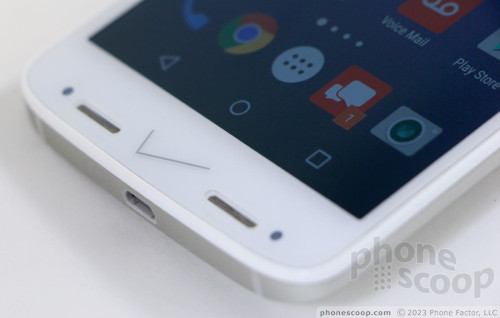
The screen lock button is located on the right side of the phone. It has a nice ribbed texture so it stands apart from the volume toggle which is located below it. I like the travel and feedback of both these controls, but I wish the volume toggle were a little bit longer. A longer button would make it better for accurately raising/lowering the volume. The SIM tray and headphone jack are on top. The SIM tray includes a slot for microSD memory cards. The USB port is on the bottom.Â
You cannot remove the T2's rear panel, nor the 3,760 mAh battery underneath. This may be a deal breaker for some.Â
As a modern slate, the T2 looks good, feels good, and functions well from a hardware perspective.Â
ShatterShield
Motorola said it spent years creating the T2's unbreakable screen. The technology behind the screen is impressive mostly because it delivers on its promise: After a week of dropping the T2 on every type of surface imaginable, I could not break the screen.Â
The ShatterShield display element is formed by five layers. The first is a rigid aluminum core to provide structural integrity. A flexible AMOLED display is placed on top of the aluminum core. The flexibility of the AMOLED helps absorb shock. The third layer is a dual touch layer to add redundancy in case of touch panel failure. The fourth layer is an "interior lens" that provides a shield against breakage. The fifth and outermost layer provides a hard cover to protect against scratches and other normal wear and tear.Â
I probably dropped the T2 100 times over the course of writing this review. I dropped it from waist height and shoulder height onto concrete, pavement, ceramic tile, grass, dirt, gravel, hardwood, laminate, linoleum and carpet over concrete, paving stones, and iron plating. Not a scratch. During the T2's launch event, Motorola dropped the phone face down onto concrete. That's fine, but dropping a phone on its corner can be even more dangerous. I tested all manner of angles to be sure the handset impacted the ground on the corners, edges, sides, back, and front. Not a scratch.Â
I imagine I could (eventually) break the screen with a hammer or other tool, but Motorola created ShatterShield to protect against the most common breakage scenario: drops. In that respect, Motorola succeeded and the T2 lives up to its "unbreakable" billing.Â
Keep in mind, however, that the T2 is not a fully rugged handset. You can't use it as a hockey puck or throw it out a window. It is not waterproof. You can't dunk it in the sink or take it swimming, although a nano-coating of the interior does protect the handset from accidental splashing, sweat, and rain.Â
Screen
The T2 features a 5.4-inch quad HD screen (2,560 x 1,440 pixels). It's a big, pixel-rich display, but it is hiding behind three layers of protection. Each layer robs the T2 of brightness and clarity, even if only a small amount. I found the screen to be adequate in terms of brightness, but it could be much better. The Droid Maxx 2, which uses an LCD display rather than AMOLED, is markedly brighter and clearer. The T2's display also leans a bit toward the warm side, which means whites look too much like yellow. Motorola is clearly limited by the properties of physics here. It can only do so much to push light through all those layers of material without impacting brightness and hue. I was able to see the screen outdoors without issue, and viewing angles are pretty solid. The T2's display is decent, but I've seen better.Â

Signal
The T2 runs on Verizon's LTE network. The phone remained connected to LTE without fail while I tested it. I was able to connect calls on the first dial each and every time no matter how strong or weak the coverage. The T2 never dropped any calls, even at highway speeds, and didn't miss any, either. Data speeds on LTE were quite impressive. I was pleased with app downloads, photo uploads, and simple web browsing when out and about. The T2 performed flawlessly from a cellular network perspective.Â
Sound
Calls placed over Verizon's legacy voice network were inconsistent as far as quality was concerned. About one-third of calls were marred by scratchiness and distortion. Moreover, voices often sounded like they were coming from the next room, rather than through a speaker next to my ear. Volume is acceptable for regular places you might go (work, quiet coffee shops, etc.), but it's not loud enough for noisy city streets or busy bars/restaurants. The quality and volume issues spill over to the speakerphone, as well. I was hoping for clearer, louder calls via the speaker, but the T2 delivers average performance at best.Â
In the T2's defense, I will say this: calls made via LTE are dramatically better than standard cellular calls. The T2 supports HD Voice and VoLTE, and as long as you and your caller are both covered by LTE, HD Voice calls sound much clearer than those over CDMA.Â
Ringers and alerts are good enough, and the vibrate always got my attention.Â
Battery
One of the T2's key selling points is 2-day battery life. Motorola endowed the T2 with a massive 3,760 mAh battery and it almost delivers on Motorola's boastful claims. There's no question that the T2 will power through a full day with plenty of power to spare. The battery often had 50% or more capacity left at the end of the day. On the second day, the battery was generally able to make it to dinner time before it became entirely depleted. That's just short of 2 days in my book, but still far better than most other handsets.Â

The T2 supports rapid charging and wireless charging. The TurboCharger that ships with the phone can deliver 13 hours of battery life in just 15 minutes. In other words, the T2 requires little charging and when it does, it will charge up quickly. You can't ask for much more than that.Â

Motorola didn't bother to give the T2 any advanced battery saver tool; instead, it ships with the standard Android system battery saver, which can be controlled manually to reduce power consumption.Â
Bluetooth, GPS, NFC, WiFi
The Bluetooth radio functioned perfectly as far as pairing with and connecting to speakers and headphones was concerned. Calls were pretty miserable via Bluetooth in my car and with high-quality headphones. The NFC radio worked great for aiding Bluetooth pairings.Â
Together with Google Maps, the T2's GPS radio located me quickly and accurately. The WiFi radio didn't give me any trouble whatsoever.Â
Software
Lock Screen
Motorola offers one of the most useful lock screens in the market. There are three basic settings. Moto Display shows important notifications as simple, interactive icons on the lock screen. Ambient Display wakes the screen regularly with a list of the current notifications in a more detailed way. Last, users can choose to leave the screen dark at all times.Â
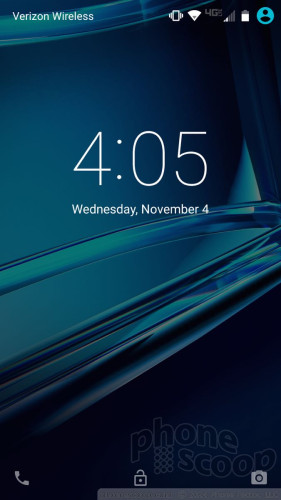
The big difference between Moto Display and Ambient Display is what you see on the lock screen. With Moto Display enabled, you'll see the Gmail logo when a new Gmail arrives, or the SMS logo when a new text arrives. That's all. With Ambient Display, you'll see the exact number of Gmails or text messages you have, and who the most recent one is from. Whichever you choose, the notifications arrive and repeat once and then go away. The clock is displayed whenever notifications arrive. The T2 is smart enough to keep the screen dark when it senses that the phone is in your pocket or purse, or face down.Â
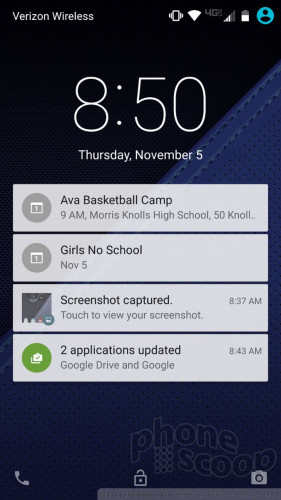
Like the Moto X, the Turbo 2 includes motion detectors. A quick wave of your hand over the screen will turn it on so you can see the time and your notifications.
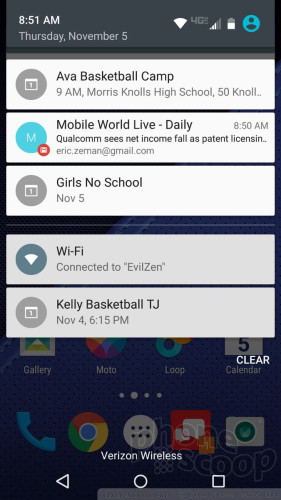
T2 owners can train the phone to wake at the sound of their voice. When it hears the catch phrase, the phone will turn on and obey commands when spoken to. For example, you can ask it to read incoming messages, send replies, and so on. It's a completely hands-free experience.
Pressing the screen lock button wakes the display to show the clock, wallpaper, and notifications. There are shortcuts to the phone and camera available on this screen.
Motorola is leading the field as far as lock screen notifications are concerned.Â
Home Screens
The Droid Turbo 2 ships with Android 5.1 Lollipop. Owners of the phone can customize the typical stuff, such as wallpapers, widgets, and so on. The T2 does not employ the Google Now launcher, and instead uses a simple home screen setup. The two default home screens and notification shade behave as expected for a Lollipop device.Â
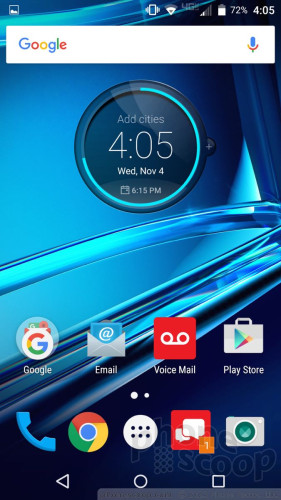
On a stock Android device, the application drawer is configured vertically with four app suggestions at the top. The T2 skips this in favor of a horizontal arrangement with no app suggestions. This means you swipe the app drawer from side-to-side rather than up and down. I like the vertical layout better. The settings menus look and behave exactly as other Lollipop handsets.Â
Thankfully, the T2 includes the Moto application. This tool bundles together a handful of functions. The Moto app controls Ambient Display / Moto Display. It also manages the Moto Assist function, which is used for changing Do Not Disturb settings based on advanced cues such as location and calendar. Last, the Moto app controls the phone's gesture controls. For example, a quick turn of the wrist will launch the camera, and a quick shake of the phone will launch the camera and immediately fire off a photo.Â
As for performance, the T2 uses a 2 GHz octa-core Snapdragon 810 processor with 3 GB of RAM. This is the fastest chip available from Qualcomm right now and that's apparent when using the phone. The T2 blasts through app installs, multitasking, and screen transitions lickety-split. The T2 handled every app, game, and task without issue.Â
Camera
The T2 uses the same camera app found on the Moto X. It's a simple affair, but has some strengths.Â
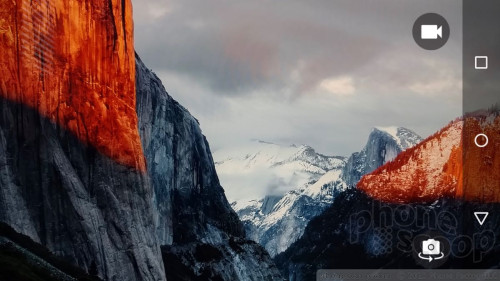
Without a dedicated camera button, I've come to rely on the wrist-twisting gesture that opens the T2's camera app. This is the fastest way to launch the camera, but it takes some training to get used to.
There are only two visible buttons in the camera app: one for the video camera and another for the user-facing camera. The other controls can only be accessed by swiping from the left side of the viewfinder towards the center.Â
The settings are arranged in a rotating dial. The T2 includes HDR, flash, touch-to-focus, and panorama features — plus some minor settings — all in this single dial. The HDR mode and flash can be set to on, off, or automatic. These shooting modes and tools all behave as you'd expect them to.Â
The T2 has an always-on burst mode. Press the screen and hold, and the T2 will focus and then capture images continuously until you lift your finger.Â
The camera app, in all its simplicity, does not let users adjust ISO, brightness, or white balance. Nor does the camera include filters or fancy shooting modes. It's a basic shooter, more in line with the features found in Apple's camera than those from LG and Samsung, which tend to cram far more functionality into their camera apps.
In terms of performance, the T2's camera is the fastest I've seen from Motorola. It focuses and captures photos so quickly you can hardly tell it's happened. It performs noticeably quicker than the camera of the Moto X and is on par with the speed of the LG G4 and Galaxy S6 Edge+.
Photos/Video
The T2 has the same 21-megapixel sensor as the Moto X and I'd say performance is the same (as it should be). The images are generally sharp and have accurate exposure and white balance. Not every images is perfect, but the vast majority are good enough given the conditions in which they were shot. I was particularly pleased with color accuracy. Low light performance was much better than Motorola cameras from past years, which were notoriously awful in poor lighting.

Most people can rely on the T2 as their main camera for general photography. Enthusiasts may still prefer dedicated equipment, but the T2 is certainly good enough for the masses. That said, the LG G4, Samsung Galaxy S6 Edge+, and iPhone 6s Plus do take better pictures.
The T2's front-facing camera captures 5-megapixel images and has a wide-angle lens. As with the main camera, I was pleased with the results. Shots taken outdoors looked very good, and the selfie flash definitely helps in low-light environments.Â
The video camera does a very good job capturing 1080p HD video. (A 4K video capture mode is also available.) The phone did a great job with focus, exposure, and white balance. The video footage I captured looked very good when blown up on my monitor. The T2 also captures slo-mo video in 720p resolution. The results are in line with the competition.Â
I'd happily use the T2 for daily video needs.Â
Bloatware
OMG, Verizon. OMG.Â
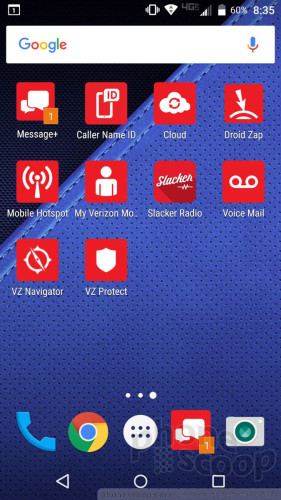
There are no fewer than 22 junk apps on board the T2. Verizon jammed an unforgivable amount of bloatware onto the T2, and most of it cannot be deleted (nor even hidden.) Four games consume a staggering 300MB of storage, but at least these can be deleted. Still: for shame, Verizon.Â
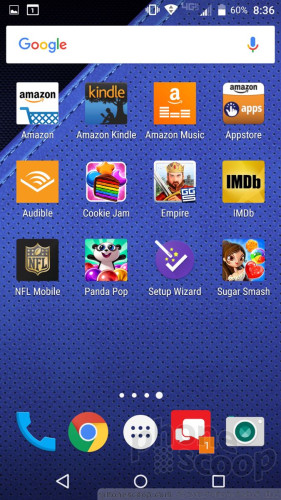
Wrap-Up
Motorola aimed high with the Droid Turbo 2 for Verizon. The Turbo 2 doesn't quite hit a bullseye, but it's firmly on-target.Â
Motorola's claims of an unbreakable screen and 2 days of battery life largely live up to the hype; the screen didn't break despite my best efforts, and the phone easily lasted from breakfast on through to dinner the next day.Â
The Turbo 2 has a decent display and excellent signal performance, but average call quality. The camera is probably the best ever from Motorola, but other leading smartphones still outperform it a bit. Many will appreciate the ability the custom design the Turbo 2 on the Moto Maker web site.Â
For Verizon customers, the Droid Turbo 2 is an easy recommendation to make, especially for those who need a shatter-proof handset.Â

Comments
clumsy oafs? klutzes?
(continues)






















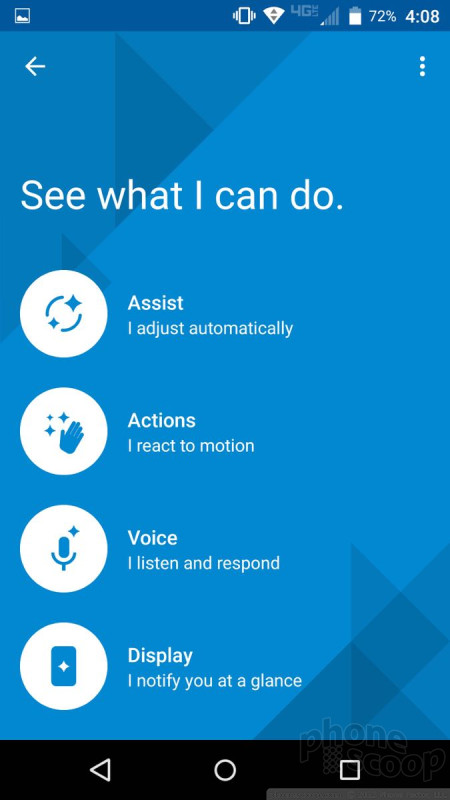







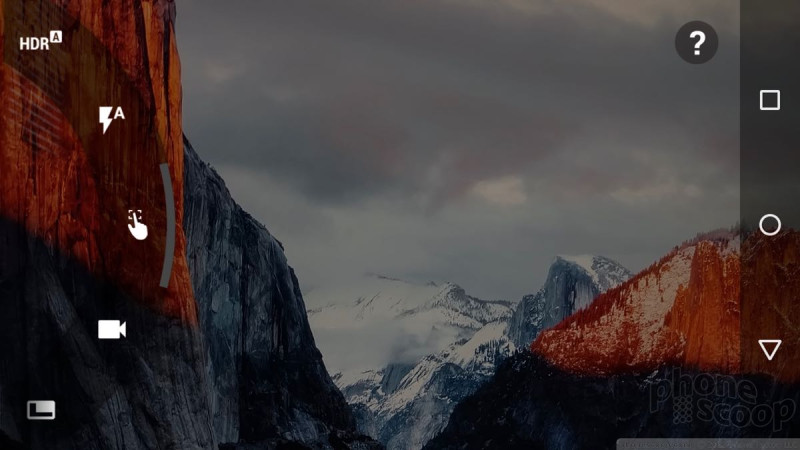





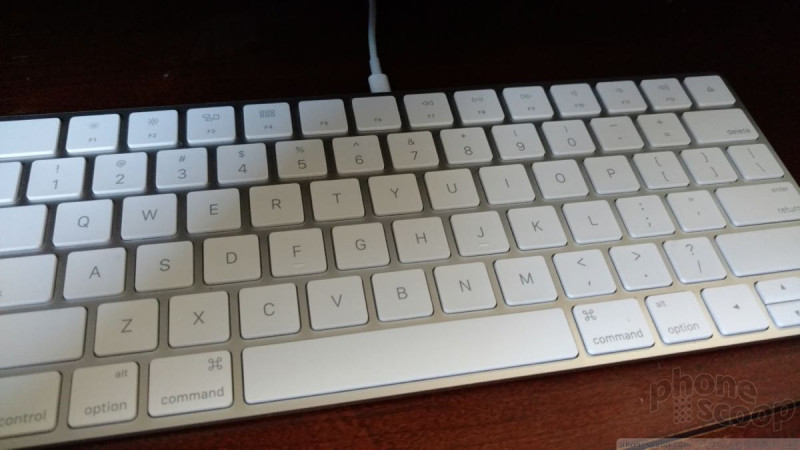











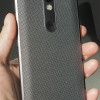 Hands On with the Motorola Droid Turbo 2 for Verizon
Hands On with the Motorola Droid Turbo 2 for Verizon
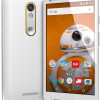 Verizon to Let Droid Turbo 2 Buyers Apply Star Wars Customizations
Verizon to Let Droid Turbo 2 Buyers Apply Star Wars Customizations
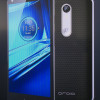 Motorola Droid Turbo 2 Has 'Shatter Shield'
Motorola Droid Turbo 2 Has 'Shatter Shield'
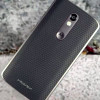 Verizon Teases Its Next Droid
Verizon Teases Its Next Droid
 Motorola Droid Turbo 2
Motorola Droid Turbo 2




